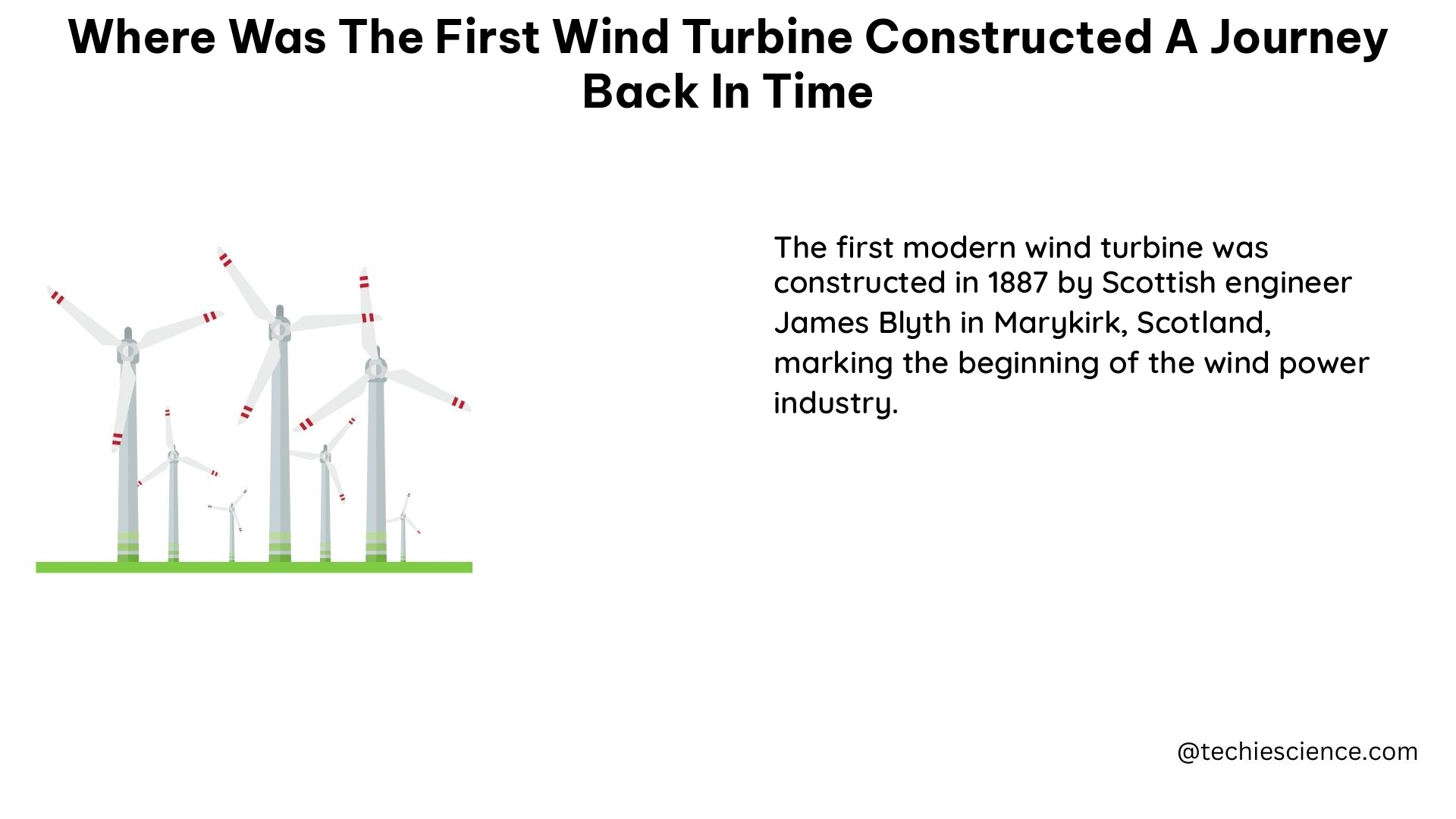The history of wind power generation dates back centuries, with the first recorded use of wind to power machinery dating back to the 7th century in Persia (now Iran). However, the first wind turbine used to generate electricity was constructed in Scotland in 1887 by Professor James Blyth. This remarkable journey through time explores the evolution of wind power and the pioneering efforts that paved the way for the modern wind energy industry.
The Windwheel of Hero of Alexandria
One of the earliest recorded instances of wind powering a machine dates back to the 1st century AD, with the invention of the windwheel by Hero of Alexandria. This device, also known as the aeolipile, was a simple steam-powered reaction turbine that used the force of steam escaping from the turbine to cause it to spin.
- The windwheel of Hero of Alexandria was a primitive but significant step in the history of wind power, demonstrating the potential of using wind to generate mechanical power.
- The device consisted of a sphere mounted on an axis, with two L-shaped tubes attached to the sphere. When steam was generated, it would escape through the L-shaped tubes, causing the sphere to spin.
- While the windwheel was not used to generate electricity, it laid the foundation for the development of more advanced wind-powered machines in the centuries to come.
The Wind Power Plants of Sistan, Persia

In the 7th century, the first practical wind power plants were built in the Sistan region of Persia (now Iran). These wind-powered machines were used to grind grain and draw up water, demonstrating the early use of wind power for practical applications.
- The Sistan wind power plants consisted of a series of vertical-axis windmills, with each windmill having sails made of reed matting.
- These windmills were used to power a variety of machinery, including grain mills and water pumps, providing a reliable source of power for the local population.
- The Sistan wind power plants were in use for several centuries, showcasing the long-standing tradition of harnessing wind power for practical purposes.
The First Electricity-Generating Wind Turbine: Professor James Blyth’s Invention
In 1887, Professor James Blyth, a Scottish academic, constructed the first wind turbine used to generate electricity. This groundbreaking invention marked a significant milestone in the history of wind power.
- Professor Blyth’s wind turbine was 10 meters (33 feet) high and had a rotor diameter of 4.3 meters (14 feet).
- The turbine was able to generate enough electricity to power Blyth’s holiday home, and he even offered to light up the main street of Marykirk with the excess power.
- Blyth’s wind turbine was a significant technological advancement, demonstrating the potential of wind power to generate electricity and paving the way for the development of modern wind turbines.
The First Automatically Operated Wind Turbine: Charles F. Brush’s Invention
In the same year, 1887, Charles F. Brush, an American inventor, constructed the first automatically operated wind turbine in Cleveland, Ohio. This wind turbine was a significant step forward in the development of wind power technology.
- Brush’s wind turbine was 60 feet (18 meters) tall and weighed 4 tons (3.6 metric tonnes).
- The turbine was able to generate up to 12 kilowatts (kW) of electricity, which was used to charge a bank of batteries.
- The electricity generated by Brush’s wind turbine was used to power various electrical tools and lamps, as well as a threshing machine, demonstrating the versatility of wind power.
- Brush’s invention was a significant advancement in the field of wind power, as it was the first automatically operated wind turbine capable of generating electricity for practical use.
The Continued Evolution of Wind Power
The pioneering efforts of Professor James Blyth and Charles F. Brush laid the foundation for the modern wind energy industry. Over the decades, wind turbine technology has continued to evolve, with significant advancements in design, efficiency, and scale.
- Today, wind turbines can reach heights of over 200 meters (650 feet) and generate up to 8 megawatts (MW) of electricity, a far cry from the early wind turbines of the 19th century.
- The global installed capacity of wind power has grown exponentially, from just a few megawatts in the 1980s to over 837 gigawatts (GW) as of 2021, making wind power a significant contributor to the world’s renewable energy mix.
- Ongoing research and development in areas such as blade design, generator technology, and grid integration continue to drive the advancement of wind power, ensuring its place as a crucial component of the clean energy transition.
The journey of wind power, from the ancient windwheels of Hero of Alexandria to the modern wind turbines of today, is a testament to the ingenuity and persistence of human innovation. The pioneering efforts of Professor James Blyth and Charles F. Brush paved the way for the wind energy industry, and their legacy continues to inspire the ongoing development of this renewable and sustainable power source.
Reference:
– The History of Wind Power
– The First Wind Turbine
– The Evolution of Wind Turbine Technology

The lambdageeks.com Core SME Team is a group of experienced subject matter experts from diverse scientific and technical fields including Physics, Chemistry, Technology,Electronics & Electrical Engineering, Automotive, Mechanical Engineering. Our team collaborates to create high-quality, well-researched articles on a wide range of science and technology topics for the lambdageeks.com website.
All Our Senior SME are having more than 7 Years of experience in the respective fields . They are either Working Industry Professionals or assocaited With different Universities. Refer Our Authors Page to get to know About our Core SMEs.